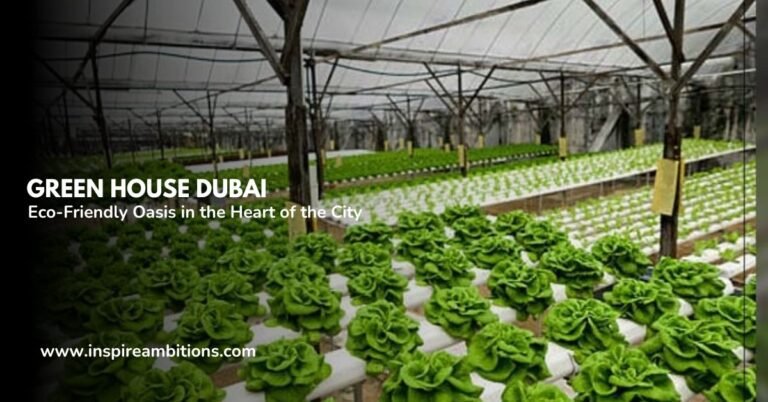Conditions météorologiques à Abu Dhabi – Ce que vous devez savoir
Abu Dhabi is the capital of the United Arab Emirates and is located in the Arabian Peninsula. The city is known for its luxurious lifestyle and modern architecture. However, the weather conditions in Abu Dhabi can be extreme, with scorching hot summers and mild winters.
During the summer months, temperatures in Abu Dhabi can soar up to 120°F, making it one of the hottest cities in the world. The high humidity levels can cause the heat to feel even more intense.
Visitors and residents need to take necessary precautions, such as staying hydrated and avoiding outdoor activities during the hottest parts of the day. In contrast, the winter months in Abu Dhabi are mild and pleasant, with temperatures ranging from 60°F to 80°F.
The weather conditions in Abu Dhabi can significantly impact daily life, from outdoor activities to transportation. It is essential to stay informed about the latest weather forecasts and take necessary precautions to stay safe and comfortable.
Despite the extreme temperatures, Abu Dhabi remains a popular destination for tourists and expats alike, drawn to the city’s vibrant culture and luxurious lifestyle.
Abu Dhabi’s Climate
Abu Dhabi, the capital city of the United Arab Emirates, experiences a hot desert climate. The city is located in the Arabian Peninsula and is surrounded by vast desert stretches. The climate is characterized by high temperatures and low humidity throughout the year.
Température
The temperature in Abu Dhabi can reach up to 50°C (122°F) during the summer months, while the winter months are relatively mild, with temperatures ranging from 15°C to 25°C (59°F to 77°F). The average temperature in Abu Dhabi is around 30°C (86°F). The city experiences warm weather throughout the year, with very little rainfall.
Humidité
The humidity in Abu Dhabi is generally low, with an average humidity level of around 60%. The humidity can increase during the summer, making the weather feel hotter and more uncomfortable. However, the low humidity levels make the weather more bearable, even during the peak of summer.
Wind
Abu Dhabi experiences a moderate breeze throughout the year, with occasional sandstorms during the summer months. The wind direction is generally from the north, with an average wind speed of around 10 km/h (6.2 mph).
Précipitations
Abu Dhabi receives very little rainfall throughout the year, with an average annual rainfall of around 100 mm (3.9 in). The rainy season in Abu Dhabi is from December to March, with occasional thunderstorms during this period.
Meilleur moment pour visiter
The best time to visit Abu Dhabi is during the winter, from November to April, when the weather is mild and pleasant. However, this is also the peak tourist season, and prices for accommodation and flights can be higher.
If you want to avoid the crowds, consider visiting during the summer, when prices are lower, but the weather can be scorching and humid.
Abu Dhabi’s climate is hot and dry, with very little rainfall. The city experiences warm weather throughout the year, with the summer months scorching. Visitors should be prepared for high temperatures and low humidity, especially during summer.
Modèles météorologiques saisonniers
Abu Dhabi experiences a hot desert climate, with long, scorching summers and short, mild winters. There are two distinct seasons in Abu Dhabi: summer and winter. Spring and autumn are transitional periods, with temperatures ranging from warm to hot.
Winter in Abu Dhabi
Winter in Abu Dhabi is short and mild, lasting from December to February. The average temperature during this period is around 23°C (73°F), with lows of 13°C (55°F) and highs of 27°C (81°F). The weather is generally sunny, with occasional rainfall. Humidity levels are low, making it an ideal time for outdoor activities.
Summer in Abu Dhabi
Summer in Abu Dhabi is long and extremely hot, lasting from May to September. Temperatures can soar up to 50°C (122°F) during the day, with lows of 30°C (86°F) at night. Humidity levels are high, making it feel even hotter. The heat can be oppressive, and staying indoors during the hottest part of the day is advisable. Air conditioning is essential during this time.
Spring and Autumn in Abu Dhabi
Spring and autumn in Abu Dhabi are transitional periods, with temperatures ranging from warm to hot. Spring lasts from March to May, with temperatures ranging from 22°C (71°F) to 36°C (97°F). Autumn lasts from October to November, with temperatures ranging from 24°C (75°F) to 37°C (99°F). The weather is generally sunny, with occasional rainfall.
In summary, Abu Dhabi experiences a hot desert climate, with long, scorching summers and short, mild winters. Spring and autumn are transitional periods, with temperatures ranging from warm to hot. Visiting Abu Dhabi during winter is advisable when the weather is mild and pleasant. It can be scorching and humid in the summer, making it uncomfortable for outdoor activities.
Extreme Weather Conditions
Abu Dhabi experiences extreme weather conditions, especially during the summer months. The city is located in a desert climate, which means that temperatures can soar to over 40°C (104°F) during the day and drop to around 30°C (86°F) at night. Humidity levels can also be high, making it feel even hotter.
During the summer months, from June to September, Abu Dhabi experiences a phenomenon known as the “khamsin”. This hot, dry wind blows in from the Arabian desert, bringing sand and dust. The khamsin can last several days and cause visibility to drop to just a few meters.
In addition to the khamsin, Abu Dhabi can also experience sandstorms, which occur when strong winds pick up sand and dust from the desert and carry it into the city. Sandstorms can be particularly dangerous for people with respiratory problems, as the dust can cause breathing difficulties.
It is essential to take precautions during extreme weather conditions in Abu Dhabi. This includes staying indoors as much as possible, wearing loose-fitting, light-coloured clothing, and drinking plenty of water to stay hydrated. It is also advisable to wear a hat and sunglasses to protect against the sun’s rays and to use sunscreen with a high SPF.
Extreme Weather Conditions in Abu Dhabi |
|---|
| Temperatures can reach over 40°C (104°F) during the summer months |
| Humidity levels can be high, making it feel even hotter |
| The “khamsin” is a hot, dry wind that blows in from the Arabian desert, bringing sand and dust |
| Sandstorms can occur, which can be dangerous for people with respiratory problems |
| Precautions include staying indoors, wearing loose-fitting clothing, drinking plenty of water, wearing a hat and sunglasses, and using sunscreen with a high SPF |
Effect of Weather on Daily Life
The weather in Abu Dhabi can have a significant impact on daily life. The high temperatures and humidity levels during the summer can make spending time outdoors challenging. The following are some of the effects of weather on everyday life in Abu Dhabi:
- Outdoor activities: During the summer, engaging in outdoor activities can be challenging due to the high temperatures and humidity. People tend to stay indoors during the day and engage in outdoor activities during the evenings when the temperature is more relaxed.
- Transport: The hot weather can affect transport in Abu Dhabi. The heat can cause car batteries to fail, and the air conditioning in cars can struggle to keep up with the high temperatures. Public transport, such as buses and taxis, are air-conditioned, but there can be long waits for these services during peak times.
- Work: The weather can also affect outcomes in Abu Dhabi. Many businesses have adapted to the hot weather by having flexible working hours, allowing employees to start and finish work earlier in the day when it is cooler. Some businesses also provide air-conditioned transport for their employees.
- Santé: The high temperatures and humidity levels can have an impact on people’s health. Staying hydrated and avoiding spending too much time outdoors during the hottest parts of the day is essential. Heatstroke and dehydration are common health concerns during the summer months.
The weather in Abu Dhabi can significantly impact daily life. It is essential to take precautions to stay safe and healthy during the hot summer months. Businesses and individuals have adapted to the weather by adjusting their schedules and using air conditioning and other cooling measures.
Climate Change Impact on Abu Dhabi’s Weather
Abu Dhabi is known for its extreme weather conditions, with temperatures soaring as high as 50°C in the summer and very little rainfall throughout the year. The impact of climate change on Abu Dhabi’s weather has been a growing concern for the government and its citizens. Here are some of how climate change is affecting Abu Dhabi’s weather:
Increase in Temperatures
Climate change has caused a significant increase in temperatures in Abu Dhabi. The average temperature has risen by 1.5°C in the last few decades, which is expected to continue. This increase in temperature has led to more prolonged and more intense heat waves, which can be dangerous for people’s health, especially for older people and children.
Decrease in Rainfall
Abu Dhabi is already a dry region with very little yearly rainfall. Climate change has worsened this situation, with a significant decrease in rainfall over the last few decades. This decrease in rainfall has led to a shortage of water resources, which is a considerable concern for the government and its citizens.
Increase in Dust Storms
Climate change has also led to an increase in dust storms in Abu Dhabi. These dust storms can be hazardous for people’s health, as they can cause respiratory problems and other health issues. They can also cause damage to buildings and infrastructure, leading to significant economic losses.
Impact on Agriculture
Climate change has had a significant impact on agriculture in Abu Dhabi. The increased temperatures and decreased rainfall have made it difficult for farmers to grow crops. This has led to a reduction in the production of local fruits and vegetables, which has increased imports.
In conclusion, climate change is having a significant impact on Abu Dhabi’s weather. The government and its citizens must take action to mitigate the effects of climate change and adapt to the changing weather conditions.
Questions fréquemment posées
What is the weather forecast for Abu Dhabi in the next 30 days?
The weather in Abu Dhabi can be pretty hot and sunny, with temperatures ranging from 35°C to 45°C during the summer months. However, during the winter, the temperature drops to an average of 25°C, with occasional rainfall. Regularly checking the weather forecast is essential as it can change quickly.
What was the weather like in Abu Dhabi yesterday?
It is recommended to check a reliable weather website or app for the most accurate information about the weather in Abu Dhabi on a specific day. Yesterday’s weather may not indicate today’s or tomorrow’s weather.
What is the climate like in Abu Dhabi right now?
The climate in Abu Dhabi is generally hot and dry, with high temperatures during the day and cooler temperatures at night. Staying hydrated and avoiding prolonged exposure to the sun during the day is essential.
When is the coldest month in Abu Dhabi?
The coldest month in Abu Dhabi is January, with an average temperature of 18°C. However, this is still considered mild compared to other parts of the world.
Is there a rainy season in Abu Dhabi?
Abu Dhabi experiences occasional rainfall throughout the year, but the rainy season is typically from December to March. During this time, the weather is milder, and the chance of rain increases.
How does the weather in Abu Dhabi compare to Dubai?
Abu Dhabi and Dubai have similar weather patterns, with hot summers and mild winters. However, Abu Dhabi tends to be slightly more desirable and humid than Dubai, especially during summer.
Conclusion
Abu Dhabi’s weather conditions contrast, with scorching hot summers and mild winters defining the climate. The extreme temperatures, particularly during the long and sweltering summer months, significantly affect daily life, from outdoor activities to transportation.
The summer heat, often exceeding 40°C (104°F) and high humidity levels, necessitates caution and ample hydration for residents and visitors. The “khamsin” hot wind and sandstorms further characterize this desert climate, requiring protective measures.
However, despite these climatic challenges, Abu Dhabi continues to lure tourists and expatriates due to its vibrant culture and luxurious lifestyle. Planning visits during the milder winter months is vital to experience the city comfortably.
With climate change exacerbating temperature increases, decreasing rainfall, and elevating the frequency of dust storms, proactive efforts are crucial to mitigate these impacts and ensure a sustainable future for Abu Dhabi’s weather and its inhabitants. Stay informed, stay safe, and adapt to the ever-evolving weather patterns in this remarkable city.






